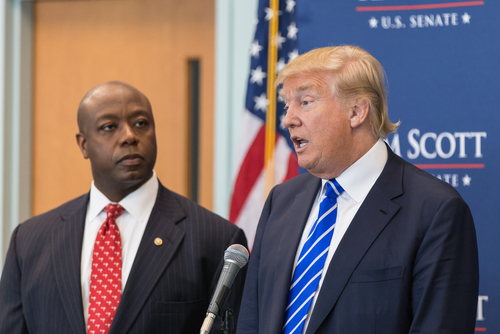
Fed’s $2.5 Billion SECRET Project!
Federal Reserve plans a $2.5 billion headquarters renovation complete with rooftop gardens and custom elevators, as critics decry the lack of congressional oversight and taxpayer burden during a period of massive financial losses.
At a Glance
- The Federal Reserve is spending $2.5 billion to renovate its Washington, DC headquarters despite operating at a financial loss since 2022
- Renovation costs have increased 32% from initial $1.9 billion estimate in 2019, with completion expected in 2027
- The project includes luxury features like rooftop gardens, skylights, and custom elevator systems
- Fed spending bypasses congressional approval and debt ceiling restrictions, raising accountability concerns
Lavish Renovation During Financial Losses
The Federal Reserve has approved a $2.5 billion renovation of its Washington, DC headquarters at a time when the central bank has been operating at a significant financial loss. The massive project, which was approved in 2021, is effectively being subsidized by taxpayers as the Fed has not been profitable since 2022. The institution reported operating losses of $77.5 billion in the previous year and an even more substantial $114.6 billion in 2023, creating what many fiscal conservatives view as questionable timing for such an expensive undertaking.
Originally estimated to cost $1.9 billion in 2019, the renovation price tag has ballooned by 32% to its current $2.5 billion. Fed officials attribute these increasing costs to significant rises in building material prices over the past several years. The renovation encompasses modernizing both the Eccles and FRB-East buildings, with luxury features that some critics have compared to the Palace of Versailles, including rooftop gardens, extensive skylights, and a completely new elevator system.
Architectural Plans and Temporary Arrangements
The renovation design draws inspiration from the original style created by architect Paul Cret, featuring Georgian white marble. This historic restoration approach aims to preserve the buildings’ architectural significance while updating the facilities for modern use. Meanwhile, the Fed’s approximately 3,000 staff members have been temporarily relocated to the William McChesney Martin Jr. building, which itself received upgrades back in 2021 to accommodate the headquarters employees during the extended renovation period.
Construction is expected to continue through 2027, creating a multi-year period during which the central bank’s operations will be conducted from alternative facilities. The relocation and extended timeline add further complexity to an already expensive undertaking, raising questions about whether such an elaborate renovation is necessary for the functioning of the nation’s central bank.
Bypassing Congressional Oversight
Perhaps most concerning to fiscal watchdogs is that the Federal Reserve’s spending does not require congressional approval and falls outside the federal debt ceiling restrictions that constrain other government agencies. This independence allows the Fed to undertake massive capital projects without the typical oversight that would apply to other federally-funded renovations. The central bank’s autonomy in financial matters has come under increased scrutiny as its recent losses have been bundled as a “deferred asset” that must eventually be paid down before funds can be allocated to other government areas.
The Fed’s financial struggles stem from increasing interest costs that have surpassed earnings on the bonds it holds, a direct result of its own rate hikes aimed at controlling inflation. A recent economic study predicts the Federal Reserve will not return to profitability until mid-2027 at the earliest, coinciding with the expected completion of the headquarters renovation project. This timeline means the central bank will likely be operating at a loss throughout the entire renovation period.
Future Accountability Questions
The combination of massive operating losses and a multi-billion dollar renovation project raises serious questions about fiscal responsibility at the nation’s central bank. As the renovation progresses and costs potentially continue to rise, congressional leaders from both parties may face increasing pressure to establish greater oversight of the Federal Reserve’s capital expenditures. The controversy highlights the broader tension between the Fed’s operational independence and appropriate accountability for its use of what ultimately amounts to public funds.




